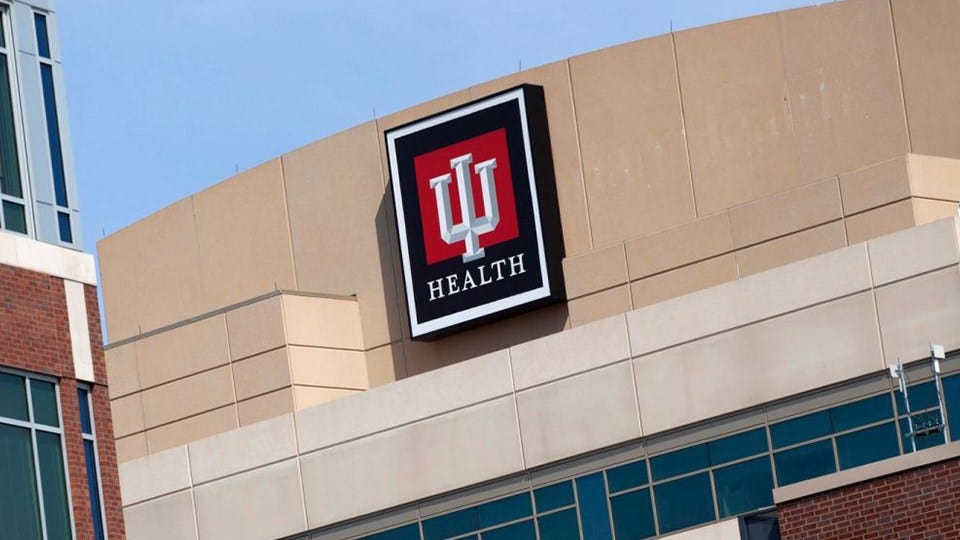Court rules Bloomington antitrust complaint against IU Health can proceed
Subscriber Benefit
As a subscriber you can listen to articles at work, in the car, or while you work out. Subscribe Now
A Bloomington surgeon alleging Indiana University Health violated federal antitrust laws by acquiring local competitors has convinced the 7th Circuit Court of Appeals to reinstate his complaint.
Dr. Ricardo Vasquez is an independent vascular surgeon who has practiced in Bloomington since 2006. Many vascular surgery patients require treatment with specialized equipment in a hospital setting, and Vasquez obtained privileges at three area hospitals: Bloomington Hospital, Monroe Hospital and the Indiana Specialty Surgery Center.
According to court documents, over 95% of Vasquez’s procedures occurred at Bloomington Hospital.
IU Health, known as Clarian Health Partners until a 2011 rebrand, entered the Bloomington market in 2010 when it acquired Bloomington Hospital. In May 2017, IU Health expanded its footprint by acquiring Premier Healthcare, an independent physician group based in Bloomington.
At the time of the acquisition, Premier employed “many of the region’s doctors, especially primary‐care providers (PCPs).” As a result of the acquisition, Vasquez alleged IU Health now employs 97% of PCPs in Bloomington and over 80% of PCPs in the wider region.
The doctor’s alleged issues with IU Health began after the Premier acquisition. Vasquez claimed that in “[a]pproximately 2017,” around the time of the acquisition, IU Health launched “a systematic and targeted scheme” to ruin his reputation and practice because he worked independently.
The complaint alleges IU Health preferred to employ the region’s doctors directly, and in June 2018, it threatened to revoke his privileges at Bloomington Hospital. At that time, Vasquez claimed IU Health employees began to “cast aspersions” on his reputation — alleging, for example, that he had been sued with unusual frequency.
IU Health followed through on its threat in April 2019, revoking Vasquez’s privileges.
In his 2021 complaint, Vasquez alleged that in the time since he started working in Bloomington, IU Health had amassed considerable market power in the region’s medical industry. He sued IU Health, claiming antitrust violations under the Sherman Act and the Clayton Act.
U.S. District Court for the Southern District of Indiana Judge Jane Magnus-Stinson dismissed the lawsuit, finding that neither the Sherman Act nor the Clayton Act claims were premised on a plausible geographic market, and that the Clayton Act claims were time‐barred.
The 7th Circuit, however, reversed the dismissal in Ricardo Vasquez v. Indiana University Health Inc., et. al., 21‐3109, reinstating the case and remanding for proceedings.
On appeal, Vasquez challenged the dismissal of his claims for failure to allege a proper geographic market and the dismissal of the Clayton Act claims, specifically, on timeliness grounds.
Looking at the first issue, the 7th Circuit relied on FTC v. Advocate Health Care Network, 841 F.3d 460 (7th Cir. 2016), finding Vasquez’s accounts of how a hypothetical monopolist could dominate Bloomington’s vascular surgery market sufficed for the pleading stage.
“The purported contradiction was between two factual claims in the complaint: (1) that patients ‘prefer to stay within Bloomington to receive care,’ and (2) that ‘many of the patients who arrive at Bloomington Hospital for care travel from rural areas, some of them up to two hours away,’” Judge Diane Wood wrote in a Friday opinion. “The district court saw an inconsistency between the two claims, and it thought that clash undermined the Bloomington market’s plausibility.”
But the 7th Circuit found “several” problems with the district court’s reasoning.
“First, Federal Rule of Civil Procedure 8(d)(3) specifically permits contradictory pleadings, and so this criticism was misplaced,” Wood wrote. “And in any event, our own examination of the allegations persuades us that they are not contradictory at all. They concern two different groups of people — urban and rural patients — with different expectations, motivations, and market behaviors.
“… The district court also reasoned that Bloomington could not be ‘the appropriate geographic market’ if ‘a significant portion of [IU Health’s] patients regularly travel substantial distances to get to Bloomington,’” Wood continued. “But this confuses two different sorts of market. The geographic market for an antitrust claim need not — and very often will not — correspond to the comprehensive market that the alleged monopolist serves.
“… Under Advocate, 841 F.3d at 476, the appropriate object of the geographic‐market analysis is the smallest market a hypothetical monopolist could dominate,” the opinion concluded. “Patient flows may help to define the borders of that market, but such flows are just one piece of data in the broader picture — they are not likely to be dispositive. To hold otherwise would be to carve a large loophole into antitrust law; realistically, some fuzziness about market boundaries will occur in most cases.”
Further, the 7th Circuit also wasn’t so sure about the Southern District Court’s determination that Vasquez’s Clayton Act claims did not meet the statute of limitations.
“… (Vasquez) filed suit four years and one month after IU Health acquired Premier,” Wood wrote. “So, if that acquisition started the clock, Vasquez missed his window by a month. But to affirm the dismissal, we would need to be sure that the undisputed facts show that the operative injury both occurred and was discovered at the moment of acquisition (or at the latest, during the following month). But the complaint does not paint such a one‐sided picture.
“… Without discovery, choosing among these alternatives is difficult, if not impossible,” she continued. “What matters is that the complaint presents a plausible account under which his suit is timely. We note as well that timeliness is an affirmative defense and thus normally (and here) is not properly resolved at the Rule 12(b)(6) stage.”
This article was first published by our partners at The Indiana Lawyer.
